Life of the wild: Why scientists study ecosystems and the wildlife within them
- Ty Werdel
- Oct 31, 2018
- 3 min read
By Jennifer Tidball
Take a step outside and enter the laboratories of several Kansas State University researchers.
Scientist Ty Werdel’s laboratory is the shortgrass prairie, where he is capturing images of the swift fox to understand the health of the Kansas landscape.
Wildlife specialists David Haukos and Drew Ricketts work in the High Plains as they track two deer species to see where they’re moving, how long they live and how these factors affect populations.
Biologist Alice Boyle spends her time with birds in two outdoor locations: the Kansas Flint Hills and the rainforests of Central America. She studies how weather patterns affect bird movement.
These researchers know there is a lot we can learn from the wild. That’s why they are searching the prairie, scanning the skies and traveling across forests and plains to track down wildlife. Their questions are as numerous as the species they study. They want to know: How are animals changing? Where are they moving? What can they tell us about the ecosystems where they live? Why is that important?
To find the answers, follow these scientists into the wild.
Swift as a swift fox
University wildlife researchers are studying swift foxes by placing game cameras on 360 sites in western Kansas. This photo gallery shows some of the images they have captured of western Kansas wildlife, including swift foxes, hawks, coyotes, skunks, bobcats, turkeys, deer, quail and cattle.
One of the biggest indicators of a healthy ecosystem is no bigger than a household cat.
Meet the swift fox — if you can catch a glimpse. The swift fox is an iconic, and adorable, shortgrass prairie species that is native to Kansas. The foxes are small; they weigh around 5 pounds and are only about a foot tall.
“Swift fox are indicator species of intact ecosystems,” said Ty Werdel, doctoral student in horticulture and natural resources. “If we find swift foxes and we keep that habitat intact, it benefits all other species that share that habitat.”
Swift foxes share habitats with animals such as grassland birds, prairie dogs and ground squirrels. Swift foxes need to live in shortgrass to be able to see predators, such as coyotes. But swift fox populations have declined in recent years as shortgrass prairies have dwindled.
“The shortgrass prairie is changing because of farmland, ranchland and highways,” Werdel said. “We want to see if this decrease in shortgrass prairie is affecting swift fox distribution. We want to determine the status of this iconic prairie species in Kansas.”
To understand swift fox populations, Werdel and a research team spent the summer breeding months tracking swift fox in 31 Kansas counties. They used cameras to capture images that show the presence of swift foxes.
Werdel is working under the direction of Adam Ahlers, assistant professor of wildlife and outdoor enterprise management. Their team of technicians includes Chelsea Werdel, junior in entrepreneurship; Asa Lee, senior in wildlife and outdoor enterprise management; and Colleen Piper from the University of Georgia. The project is supported with a three-year grant from the Kansas Department of Wildlife, Parks and Tourism.
The researchers have worked with private landowners to place game cameras on 360 sites in western Kansas stretching from the Nebraska to Oklahoma borders. They place the cameras on metal stakes near skunk bait, which they use to attract animals. The motion-activated cameras capture images — ideally images of swift foxes — whenever they detect movement.
The researchers have captured a variety of swift fox photos: a blurry fox running by in the middle of the night with a mouse in its mouth; a fox den with a mother and her babies; two fox pups playfully roughhousing.
The team is using the images to create a map that shows where swift foxes can be found throughout western Kansas. Werdel is investigating how landscapes, habitat, vegetation, precipitation and climate affect where the foxes are located.
Perhaps what is just as interesting and humorous are the photos that the team has captured of other animals: a herd of cattle gathering curiously around the camera; a bobcat sneaking nearby; a flying hawk diving toward prey.
Although their primary goal is to track the presence of swift foxes, the researchers are learning about the variety of wildlife across the western portion of the state as they work to understand the health of the Kansas prairie.
“It is important to understand how species distributions are being impacted by landscape change,” Ahlers said. “This is especially true for animals like swift foxes that are habitat specialists occurring in areas where shortgrass prairies are becoming increasingly rare.”

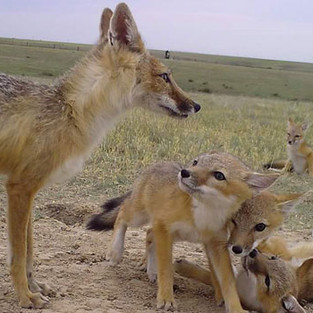
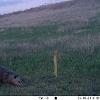
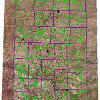
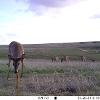
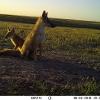

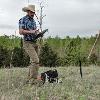
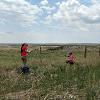
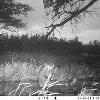
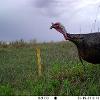
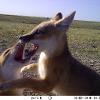
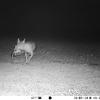
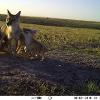


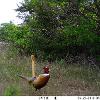
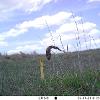
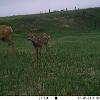
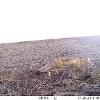

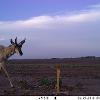
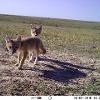
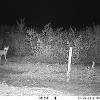

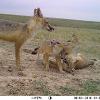
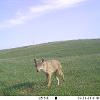
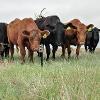


Comments